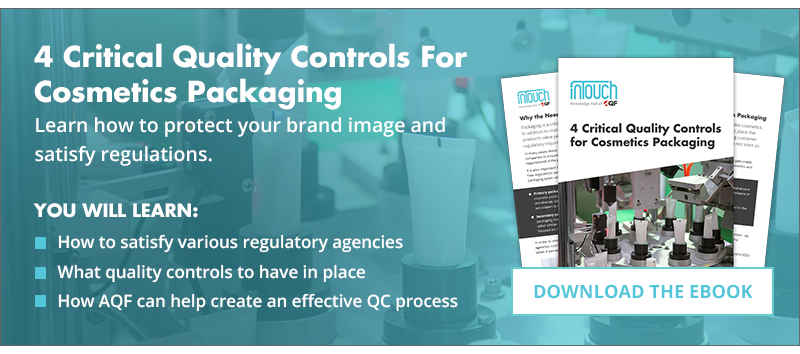In 2026, cosmetics packaging is under closer scrutiny than ever. Between the U.S. FDA’s Modernization of Cosmetics Regulation Act (MoCRA) and the EU’s evolving restrictions on microplastics and other substances, packaging is no longer just about looks—it’s central to safety, compliance, and brand trust.
Here are three essentials to focus on when sourcing packaging.
1. Material Safety: Choose Skin‑Safe, Non‑Toxic Options
Safe materials are the foundation of reliable cosmetics packaging. Poor choices can lead to contamination, recalls, and reputational damage.
Prioritize compliant, skin‑friendly materials
- Favor well‑characterized options such as glass, PET, PP, PE, and aluminum that are commonly used in food and cosmetics contact.
- Avoid materials or pigments containing heavy metals (e.g., lead, cadmium) and ensure colorants meet applicable regulations.
Control leachables, extractables, and PFAS
- Conduct migration and compatibility testing to ensure packaging components don’t transfer harmful substances into the formula.
- PFAS (“forever chemicals”) are under growing regulatory and consumer pressure in both the U.S. and EU. Many brands are proactively eliminating PFAS‑based coatings, inks, and barriers.
- Vet suppliers for documented testing, and consider third‑party certifications or biocompatibility assessments when packaging is likely to contact skin for extended periods.
2. Product Protection: Preserve Stability and Performance
Packaging must protect formulas from light, air, moisture, and mechanical stress. Failing here can shorten shelf life and undermine product claims.
Use appropriate barrier technologies
- For light‑sensitive formulas, use opaque or tinted containers (e.g., amber or matte bottles) to reduce UV exposure.
- For oxygen‑sensitive products, consider airless pumps, nitrogen flushing, or multilayer structures to limit oxygen ingress.
- For liquids and semi‑solids, specify tight seals and closure systems designed to prevent leakage under pressure and temperature variation.
Design for shelf life and shipping
- With global e‑commerce, packaging must withstand drops, vibration, and temperature swings.
- Request or perform drop, compression, and seal integrity testing to verify packaging can protect the product through distribution.
3. Compliance & Standards: Build a Robust Supply Chain
Under MoCRA and EU cosmetic rules, documentation and traceability are no longer optional.
Align with regulatory and quality standards
- Under MoCRA, U.S. companies must ensure adequate safety substantiation, facility registration, and product listing, and will need to follow forthcoming FDA Good Manufacturing Practice (GMP) regulations for cosmetics.
- In the EU, packaging and formula must both comply with Regulation (EC) No 1223/2009, plus relevant REACH and CLP obligations for substances and mixtures.
Work with suppliers who can provide:
- Batch‑specific quality and test reports (physical, chemical, and where relevant, microbiological).
- Clear material specifications (e.g., resin type, additives, inks, adhesives).
- Supportive documentation for global markets (e.g., Declarations of Compliance, safety data on components, and test reports).
Source Smart and Scale Confidently with Professional Quality Control
Sourcing cosmetics packaging demands a balance of innovation, safety, and foresight, especially in the rising regulatory hotspot. Maintaining high standards in packaging isn’t just about appearance—it’s about ensuring safety, compliance, and brand integrity.That’s why brands opt for work with trustworthy quality control partners to prevent costly recalls and build consumer trust from the ground up. Here are some of the most-used quality control solutions:
Product Inspections
Regular product inspections help identify defects early in the production process, ensuring packaging materials meet design, durability, and functionality requirements. By verifying appearance, labeling, and sealing performance before shipment, brands can avoid inconsistencies that compromise product safety and shelf appeal. Common checkpoints or on-site tests of an inspection include:
- Appearance check: to ensure the visual quality and overall presentation
- Capacity test: to ensure the actual volume or filling capacity
- Leakage test: to ensure the seal integrity and airtightness
- Carton-drop test: to ensure the packaging can withstand the stresses of transportation
Laboratory Testing
Laboratory testing further safeguards quality by validating that packaging materials are free from harmful substances and meet international regulations. Tests for chemical migration, heavy metals, and stability confirm that packaging won’t contaminate the product or degrade over time.
Partnering with professional quality control team like AQF means gaining access to expertise, global lab networks, and tailored inspection protocols designed specifically for cosmetics packaging. We help you stay compliant, reduce risks, and scale confidently across markets.
Turning potential pitfalls into competitive edges. Contact AQF to source smarter and grow stronger with high-standard cosmetics packaging products.







